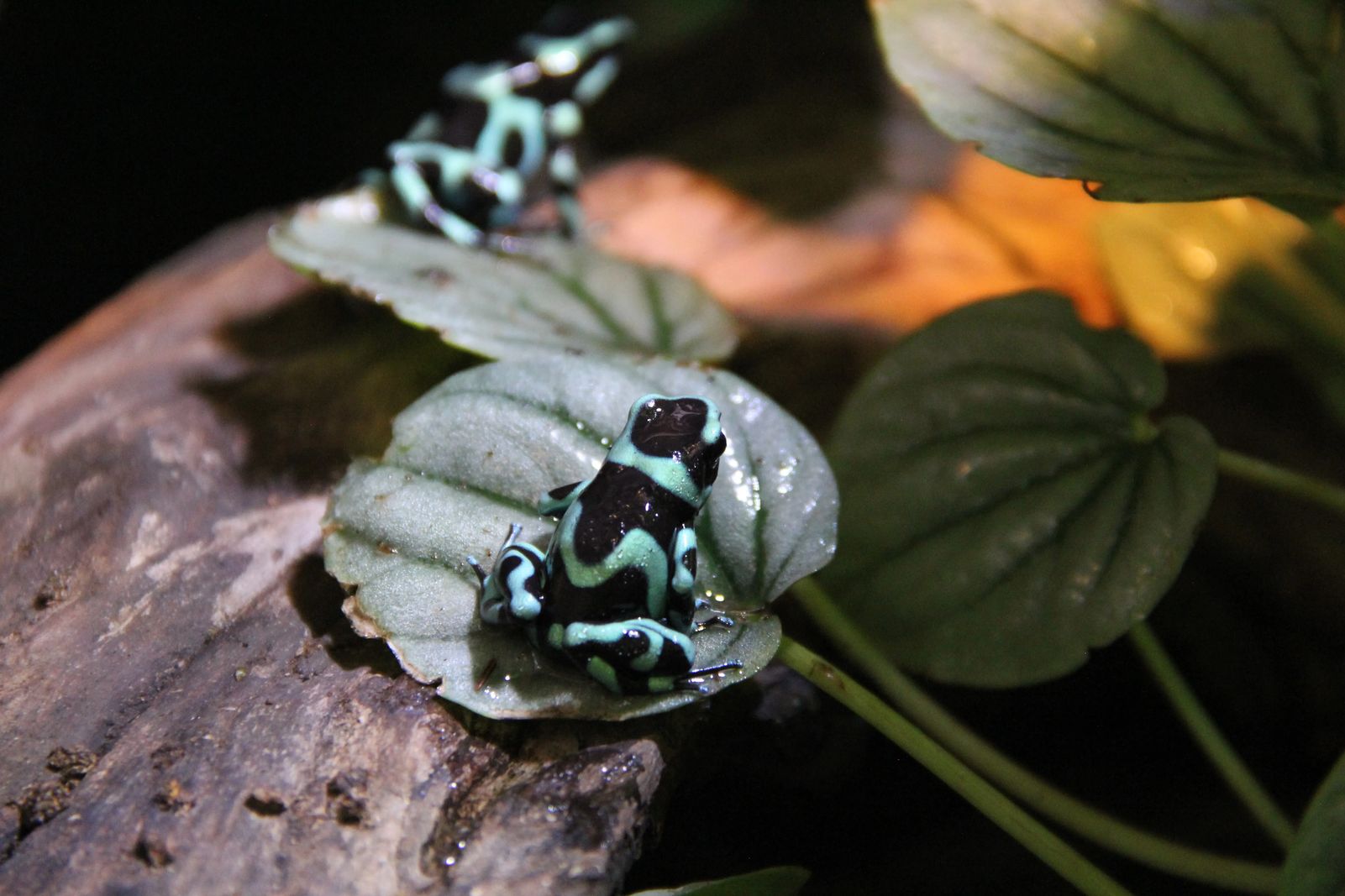
GREEN AND BLACK POISON DART FROGS
Dendrobates auratus
Green and black poison dart frogs get their name from the coloration, but also from the local Indigenous People. The Choco People of western Columbia use the toxins in golden dart frogs to put on the tips of the blow darts to hunt due to their poisonous secretion being strong enough to take down small birds and mammals. Green and black poison dart frogs are also known for their size because they are so small, only averaging the size of a quarter (0.75 to 1.5 inches in length). These frogs are black with a very vibrant green which is not exactly helpful for camouflage but serves a different purpose in showing an aposematic signal. An aposematic signal or aposematism is an animal’s bright coloration used to indicate high toxicity to potential predators. It is thought that these frogs get their toxins from the different bugs that they eat, and their toxins are strong enough to cause complications if touched or ingested. These frogs can be found from Bolivia to Southeastern Brazil and Costa Rica to Nicaragua and rely on rainforests with high amounts of moisture and humidity to stay healthy.
OUR CURRENT RESIDENTS
Relish, Unknown Gender – Hatched in May 2021
Relish came to the zoo in 2022 from Adventure Aquarium in Camden, New Jersey. Relish is one of our nine poison dart frogs and although they came to ZooMontana at different times they are all related. It may be hard to tell these guys apart, but there is a sign outside of their habitat with pictures to help identify who is who.
Marissa, Brian Jr., Luke Jr., Gherkin, Pickle, Heinz, Vlasic, and Dill – Gender and Hatch date are Unknown
These eight poison dart frogs came from ABQ BioPark in Albuquerque, New Mexico in 2023. It may be hard to tell these guys apart, but there is a sign outside of their habitat with pictures to help identify who is who.
TAXONOMY
Kingdom: Animalia
Phylum: Chordata
Class: Amphibia
Order: Anura
Family: Dendrobatidae
Genus: Dendrobates
Species: Dendrobates auratus
ANIMAL FACTS
Insectivore: mainly eat ants, termites, centipedes, and tiny beetles
Population Status: currently listed as Least Concern
Habitat: rainforest, high forest canopies
Activity: diurnal- mainly active during the day
